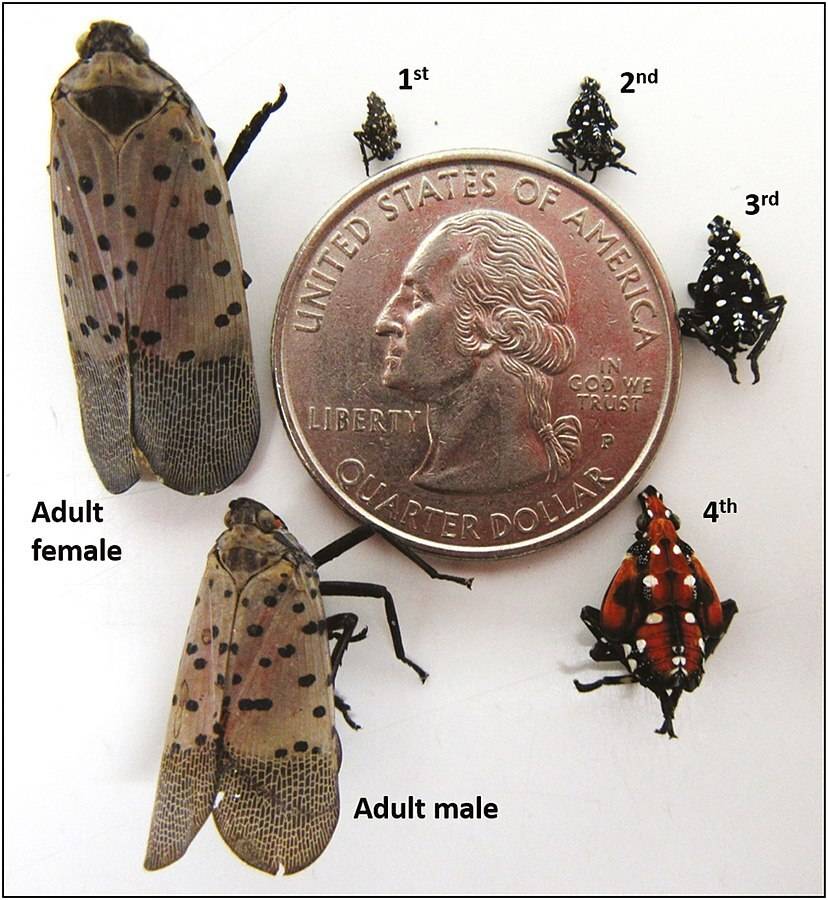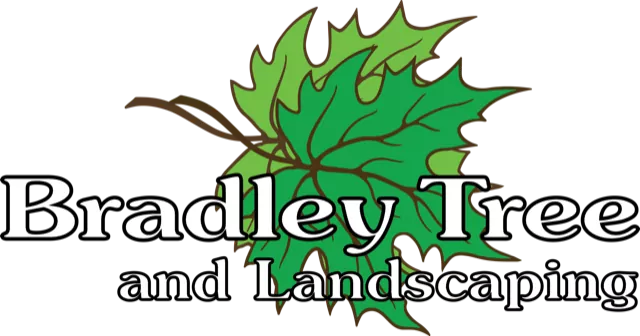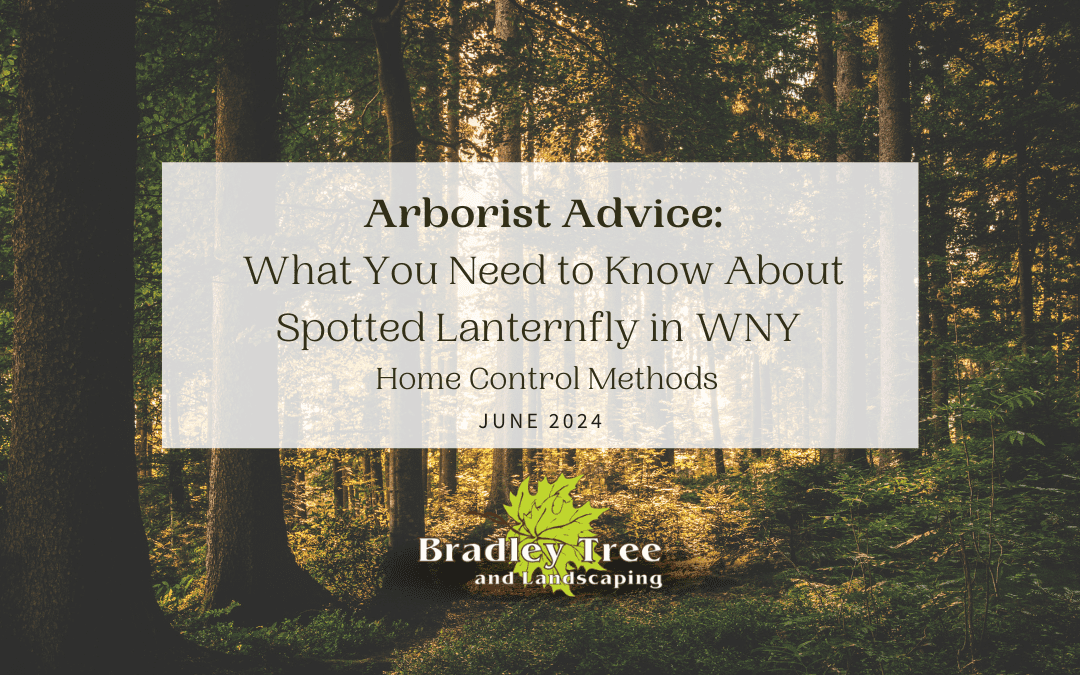Imagine walking out into your backyard on a sunny morning. You spot an unfamiliar insect on your favorite tree. It’s beautiful but something about it feels wrong. This is how many encounters with the Spotted Lanternfly (SLF) begin. This invasive pest is making its mark in Western New York (WNY), and it’s crucial for homeowners to understand its impact and how to deal with it.
Hello and welcome back to the blog here at Bradley Tree and Landscaping! Here on the blog, we like to discuss the best ways to take care of your trees and landscaping, give general advice on tree care (and when you need a professional), and some landscaping ideas. We also take time to talk about dangers posed to New York trees, from invasive species of insects, and other tree species. If you haven’t put it together yet, we’re continuing on that mission, spotlighting SLF and what home remedies you have for control.
The Spotted Lanternfly is more than just a pretty bug. It poses a serious threat to our trees, plants, and even our local economy. Being aware and proactive can help protect your property and our community. Let’s dive into what you need to know.
What is the Spotted Lanternfly?
Identifying the Spotted Lanternfly
The Spotted Lanternfly is a striking insect. It has black spots on its wings and a vibrant red underwing. When it’s at rest, its gray wings with black spots make it look somewhat unassuming. But when it takes flight, the red underwings are unmistakable.
Life Cycle and Behavior
Understanding its life cycle is key to controlling it. The Spotted Lanternfly goes through several stages:
- Eggs: Laid in the fall and look like mud splatters.
- Nymphs: Hatch in spring and go through four stages, starting black with white spots, turning red and white as they mature.
- Adults: Emerge in late summer, mate, and lay eggs for the next generation.

This insect prefers to feed on the sap of trees and plants, which weakens them over time.
Why is the Spotted Lanternfly a Problem in WNY?
Threats to Local Ecosystems
The Spotted Lanternfly is not just a nuisance; it’s a genuine threat. It primarily targets hardwood trees, grapevines, and other plants. As it feeds, it excretes a sticky substance called honeydew. This attracts mold and other pests, further damaging the plants.
We talked about some of the most at-risk plant and tree species in an earlier post covering SLF, but for a refresher, the list includes:
- Almonds
- Apples
- Apricots
- Cherries
- Grapes
- Hops
- Maple Trees
- Nectarines
- Oak Trees
- Peaches
- Pine Trees
- Plums
- Poplar Trees
- Sycamore Trees
- Walnut Trees
- Willow Trees
The damage goes beyond your backyard. Agriculture and forestry are vital to WNY’s economy. Infestations can lead to significant crop losses and increased control costs. For homeowners and farmers alike, this pest is expensive and disruptive.
At-Home Pest Control: What You Can Do
Regular inspection is your first line of defense. Look for:
- Eggs on tree trunks, outdoor furniture, and even vehicles.
- Nymphs and adults on plants, especially those that excrete sap.
If you find egg masses, scrape them off into a container with rubbing alcohol to kill them. This might seem tedious, but it’s effective in reducing the number of lanternflies come spring.
DIY Treatment Options: Homemade Remedies
Several homemade solutions can help! Some home remedies you might have on-hand that are effective include:
- Vinegar – Directly spraying vinegar will kill nymph and adult spotted lanternfly on contact. You can use either apple cider vinegar or white vinegar. Works best undiluted with water, although you can dilute. Can harm the underlying plant, so be cautious.
- Insecticidal soap – Can be directly sprayed on SLF or be misted over the plants they’re feeding on, providing an effective control method over a wider area.
- Vacuum – You can vacuum up the nymphs and dispose of them
- Soap and Hot Water – In a spray bottle, combining liquid dish soap and water can be an effective control method. Use ¼ cup liquid cup per quart of water with some vegetable oil. Can kill nymphs and adults on contact by suffocation.
- Neem oil – A natural fungicide derived from the Neem tree that disrupts the eating ability of the pest. Spray directly on SLF. It doesn’t immediately take effect, but the creatures eventually starve.
- Milkweed – A wildflower that attracts the SLF, poisoning and killing them. If the pest isn’t killed from the poison, it’ll be slowed and easier to pick off from another method.
However, arguably the best thing you can do is to identify any invasive Tree of Heaven species in your area, and having them professionally removed as soon as possible. Not only is the Tree of Heaven the preferred home and feeding ground of this insect, it’s also an invasive species itself that can cause harm to humans and rid the local ecosystem of native plant life. For more on this tree species, check out our post on native and invasive tree species in the Buffalo area.
Using Store-Bought Solutions for Spotted Lanternfly in WNY
There are also effective insecticides available. Look for products specifically labeled for Spotted Lanternfly control. Always follow the instructions to ensure safety and effectiveness.
When to Call the Experts
Signs You Need Professional Help
If you find a large number of lanternflies or egg masses, it’s time to call in the pros. This is especially true if you see damage spreading quickly across your trees and plants. Signs of significant damage include wilting, mold growth from honeydew, and visibly weakened trees. Professional arborists can assess the situation and recommend a treatment plan.
Expert Assessment, Treatment, and Preventative Measures
Bradley Trees offers comprehensive pest control services. Our experts can identify the extent of the infestation and use specialized treatments to manage and eliminate the Spotted Lanternfly.
Preventive care is essential. Regular maintenance and monitoring can keep your property safe from future infestations. We offer customized plans to keep your trees and plants healthy year-round.
Importance of Localized Control Efforts
Community Involvement in Buffalo and WNY
If you spot Spotted Lanternflies, report them to local authorities. This helps track and manage the spread. It’s a community effort to keep our environment safe.
Join community initiatives aimed at controlling this pest. Participate in local clean-up days or educational workshops. The more we work together, the better our chances of keeping the Spotted Lanternfly at bay.
Trust Your Local ISA-Certified Arborists!
Bradley Tree and Landscaping have been in business for 40 years! We’ve been proudly serving the Buffalo area with expert tree care services. These include wider plant health care, tree planting and tree removal, tree pruning and trimming, seasonal plant care and landscaping, emerald ash borer treatment, and more! Our exemplary work has earned us the honor of working on Olmstead Park’s oldest oak tree with pruning, restoration, and maintenance.
The Bradley Tree Method
Remember, our most educated customers are our best customers! Here at Bradley, tree education so that homeowners know how to preserve their gentle giant neighbors is among the most important work we do.
Don’t forget to stay up to date with your favorite Buffalo arborists by following us on our blog and on Facebook, Instagram, and YouTube! If you need an ISA-certified arborist or a consultation, feel free to reach out by calling us at 716.916.2193 or by visiting our convenient contact form.
The Spotted Lanternfly is a formidable foe, but with the right knowledge and actions, we can protect our homes and communities. Regular inspections, proper treatment, and professional help when needed are key strategies.
Are you ready to take action against the Spotted Lanternfly? Contact Bradley Trees today for expert advice and services to keep your property safe and healthy. Together, we can protect our ecosystem.

